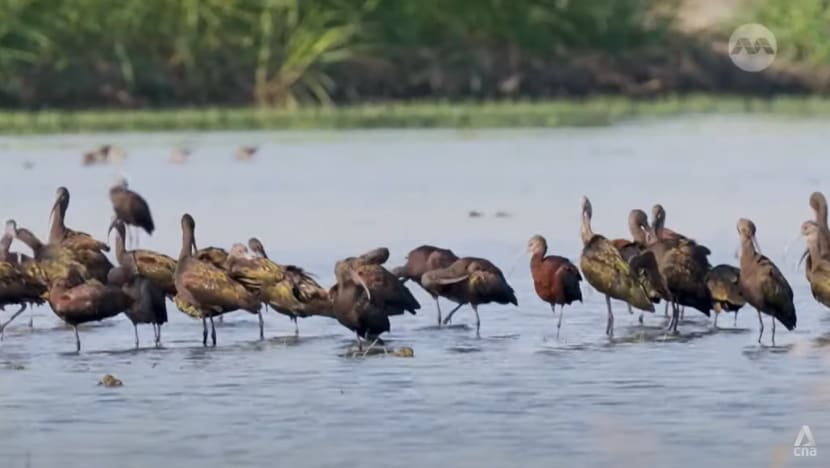What are US cities doing to reduce the deaths of billions of birds from light pollution?
Experts believe that as many as a billion birds die from colliding with buildings and man-made structures every year, removing a key balancer in the global ecosystem.

Migratory birds in the United States.

This audio is generated by an AI tool.
AUSTIN, Texas: In October last year, Chicago residents woke up to the sight of at least 1,000 migratory bird carcasses surrounding North America’s largest convention centre.
McCormick Place, located in the heart of the city, is largely covered in glass. This has proven particularly lethal for birds which cannot tell whether the trees or sky they are seeing are real, or just a reflection.
These buildings are usually tall and brightly lit, causing the feathered creatures to fly straight into glass windows and to their deaths.
Experts believe that as many as a billion birds die from colliding with buildings and man-made structures every year, removing a key balancer in the global ecosystem.
Billions of birds migrate through the United States in the spring and fall seasons. Last month, authorities in Chicago – which is in the Mississippi Flyway, a major bird migratory route – asked residents to turn off non-essential lights to help save the animals’ lives.
BIRDS HELP FIGHT CLIMATE CHANGE
Aside from being a critical part of the world’s ecosystem, birds play an important role in fighting the effects of climate change.
They disperse seeds, which spread plants into new areas, as well as provide nutrients to marshes that serve as a buffer from storm damage. Some even help pollinate plants and reduce the spread of disease.
But since the 1970s, the North American bird population has been in steep decline. Concern has grown over the broader knock-on effects.
“You’re looking at the ecosystem regeneration, right? Because if that seed dispersal doesn't happen, then you might see the plants die where they are,” said Ms Joni Carswell, CEO and president of Texan by Nature.
“If you're talking about the plants and trees, it's not cleaning the air in the same way. It’s increasing the temperature because they're not capturing carbon, which is increasing the temperature of the ocean.
“So it goes and it goes and it goes, and it has a massive impact on climate change,” Ms Carswell added.
LIGHTS OUT CAMPAIGN
In a bid to reduce the mortality rates, cities across the US have joined the Lights Out campaign – an initiative encouraging building owners and residents to shut off their lights between 11pm and 6am, the prime migration time for birds.
Research has shown that a simple flip of the switch can reduce collisions by up to 60 per cent. Adding decals to windows to make them less reflective, or simply shutting the shades, can also help.
With less light pollution from cities, birds are less likely to fly into urban areas like the city of Austin in Texas.
There, bird enthusiasts frequently gather at daybreak – not to birdwatch, but to search for birds that have died in the middle of the night from building collisions.
CNA spoke to the group of enthusiasts from non-profit Travis Audubon Society, which aims to protect native habitats for birds and other wildlife.
“It's not glamorous work because you're getting up very early and you are looking for dead birds, but it's important work,” said the organisation’s programme manager Caley Zuzula.
The data that she and other members gather gives researchers important insights into how light pollution affects bird migration.
Texas’ sky is an avian superhighway, funnelling billions of birds south in the winter and then north again in the summer. However, rapid urbanisation is throwing them off course.
Ms Zuzula explained: “Birds use the moon and the stars to navigate, and so when there is a lot of light pollution at night, that can be really confusing for birds.
“They might get disoriented and once they're in the city, they are subject to all sorts of urban threats, especially window collisions, building collisions.”
On the bright side, Ms Zuzula said she has seen the effects of the Lights Out campaign.
Her team now finds fewer bird carcasses on their early morning walks – though finding none is the kind of success they are ultimately searching for.














